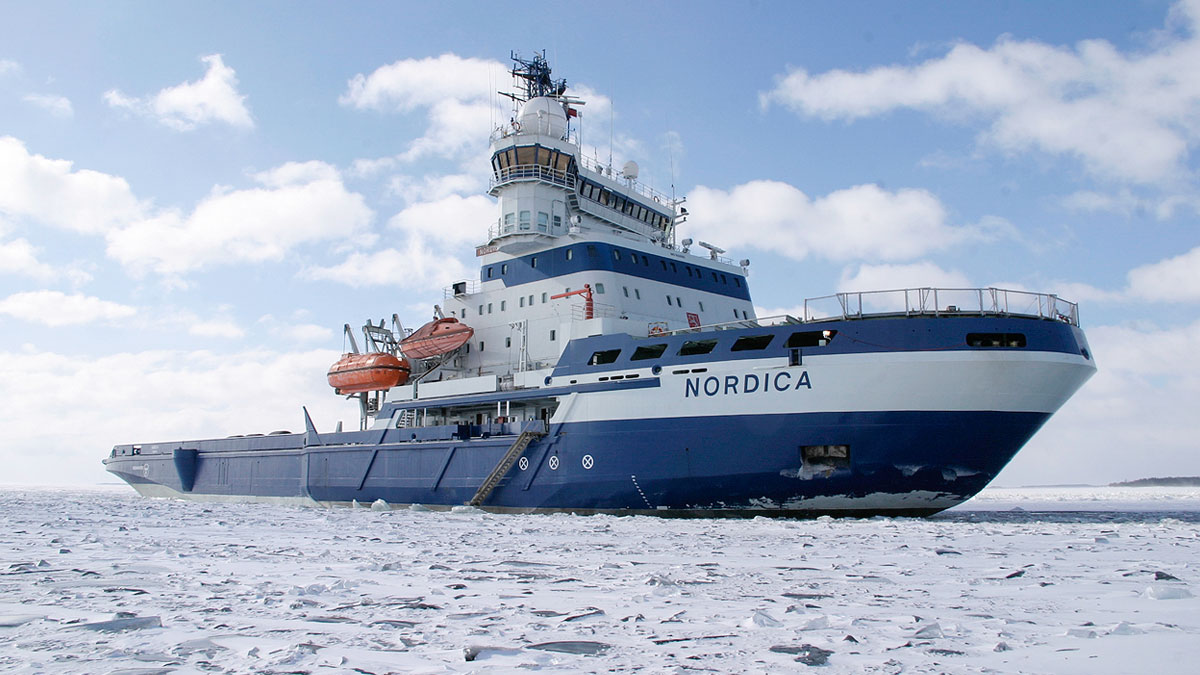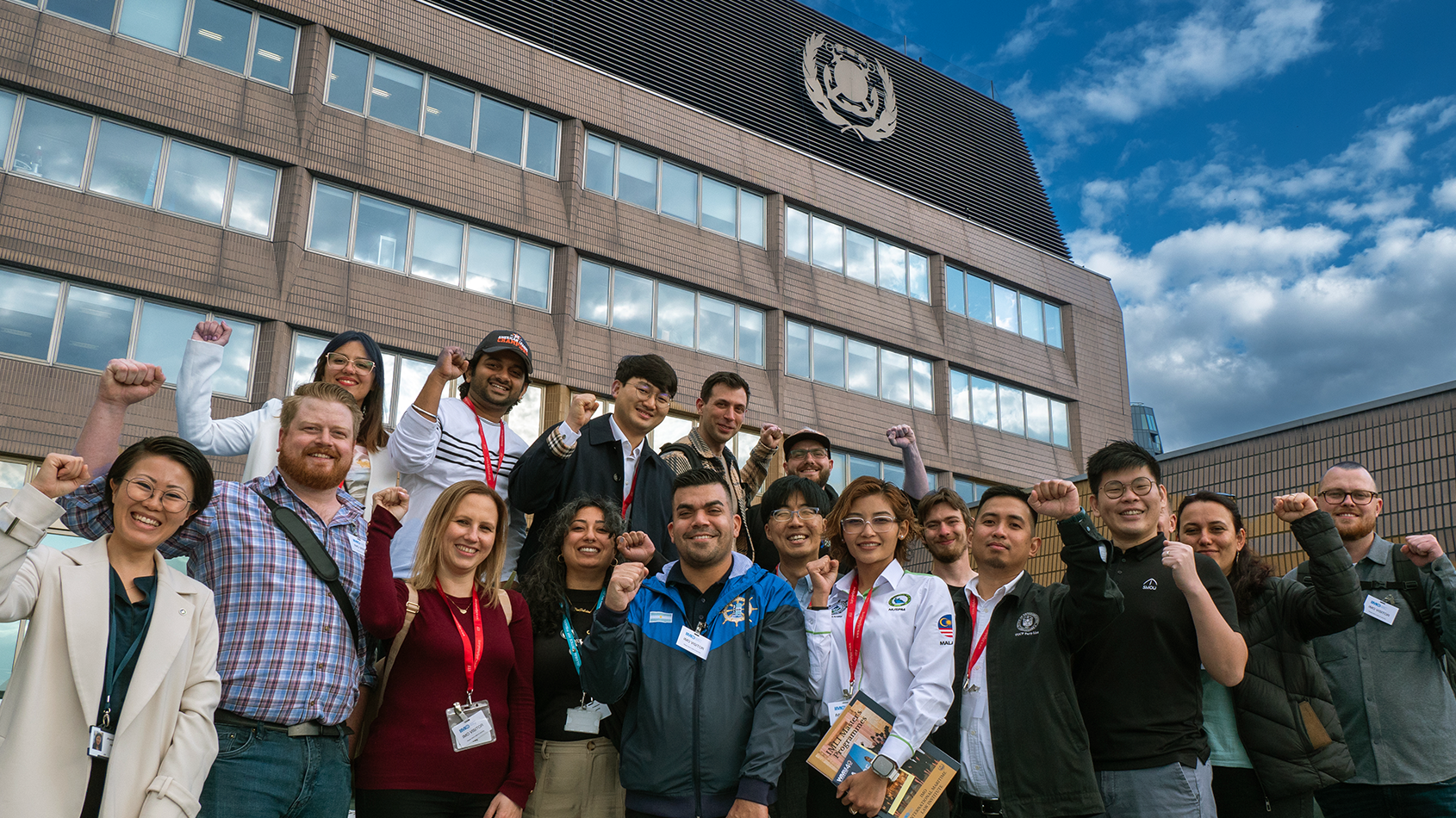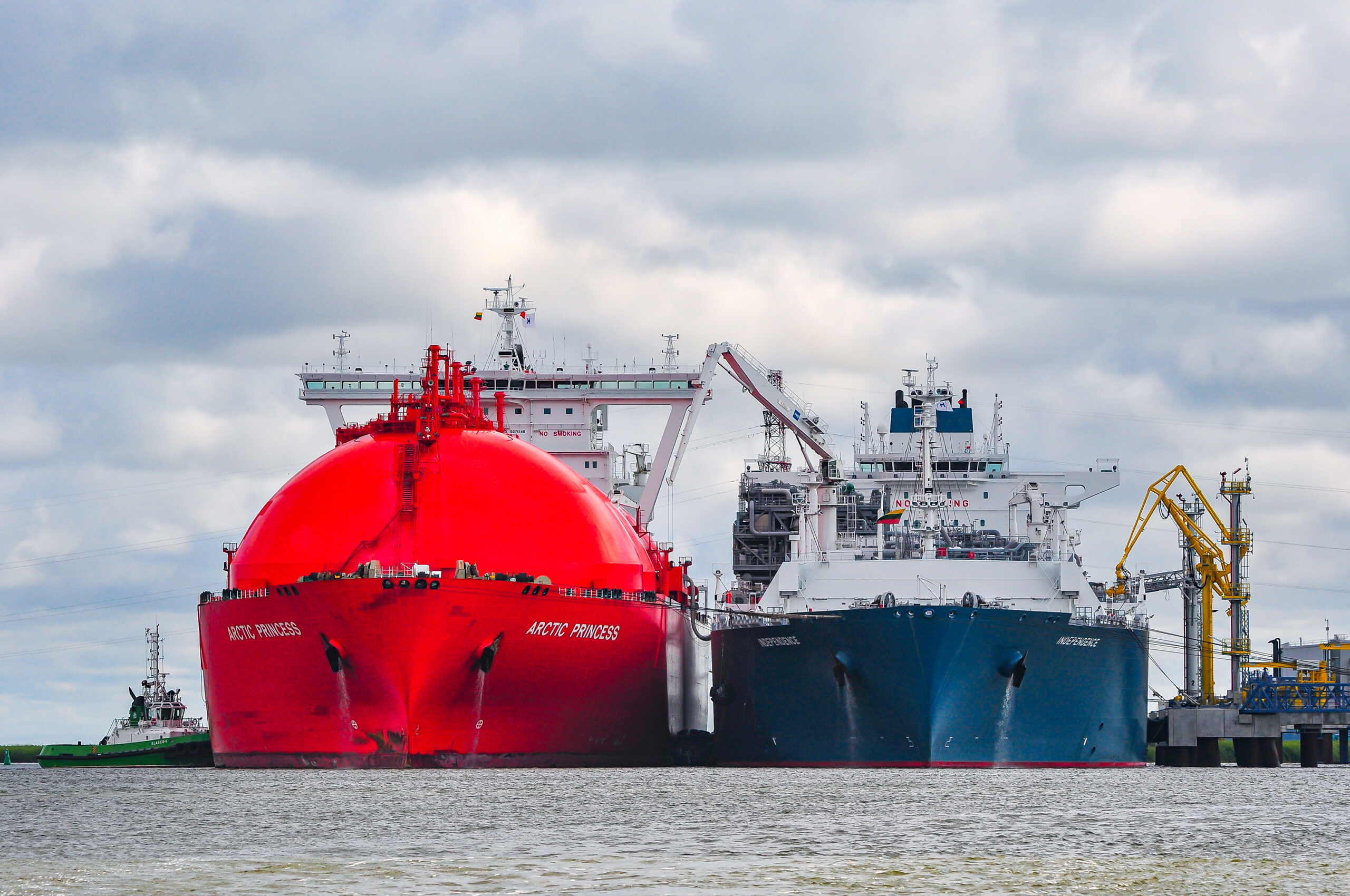By Craig Eason, Editorial Director, Fathom.World
A ship just went through the North-West Passage in July.
That’s the earliest transit of the northern route across the top of Canada in history and may make one believe the Arctic is open for transit business as the summer window of opportunity widens every year. Think again.
The vessel that made the voyage was a dedicated icebreaker, Nordica which was being re-positioned after spending a season under contract at the oil fields of Sakhalin in Eastern Russia. Nordica is a Finnish icebreaker owned by Arctia and was, still is, heading home, via a pit stop in a Danish drydock for maintenance after her Russian contract and NWP transit.

Nordica is a sophisticated polar icebreaker with a lot of power and an ability to push itself through thick ice. And it needed to for this voyage as some of the ice thicknesses it encountered were reportedly about a meter thick, as the images from a photographer on board show.
So yes, its good that a heavily powered icebreaker could make such a transit, and for those of us interested in the Arctic and shipping it made for interesting reading. But no, it does not mean hundreds of vessels are about to flock through the NWP passage making light of the historical travesties of earlier explorers that struggled for centuries in their search for a link between east and west.
Global warming may be responsible for a decline in multiyear ice in the icecaps, but that still leaves changeable climates in the north in winter where ice can grow back quickly and thickly, so while this season may prove to be a larger “window of opportunity” for more transits, next year’s summer season may not.
Other factors playing against a huge increase in transit numbers are infrastructure and cost. The vessel operators planning transits are those that can convince their insurers they have taken care of all the details, that the ships are prepared and capable, the crew is trained and aware of the risks, and the technology up to scratch.
A NWP transit is also not blessed with full communications throughout the voyage.
Nordica is equipped with VSAT, Iridium and GMDSS; The VSAT, that which can be cheaply and readily used by researchers and crew, dropped off for a few days. If the ice had been thicker at that point the period would have been longer.
That left the vessel dependent on the slower and more expensive Iridium, and of course GMDSS (Global Maritime Distress and Safety System is a mandatory system using terrestrial and satellite connectivity) in an emergency. Let’s not forget that the vast expanse of water often leaves a vessel out of sight of other ships and far from communities for days on end, and the communities that are may not be able to deal with an emergency.
Interest in the North Weest passage is passionate, as it is steeped in the history of valiant exploration, the tensions of indigenous people and modern society, and of course the impact of man on the environment.
For me, I am happy to see the occasional ship in the Arctic, advancing research, and even taking tourists up there or conducting business. Interest will continue to grow in the Arctic and no doubt there will continue to be some tension, but at least the discussions should be honest, responsible and based on facts.
Craig Eason
The f-word blog aims to offer a personal opinion, from the Fathom Editorial team, of events and trends in the developing transformation of the shipping industry.

































